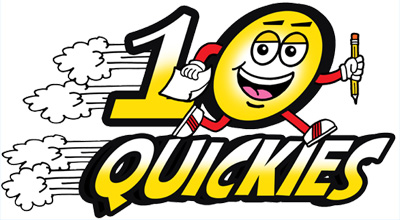Overcome the Everyday Math Groups Hurdle |
|
|
 Everyday Math Groups - Overcoming The Hurdle Article Summary: Don't be intimidated grouping your students for everyday math. Use these specific teaching strategies to help make this a smooth process. ------ Everyday Math Groups - Overcoming The Hurdle by Gregory L. Gomez After teaching for 15 years, one of the first things I must admit is that I never had much success with grouping students particularly for math. Whenever I attempted this in my early years, chaos would erupt, and I ended up with a room full of racket and off task students. However in our school district, the increasing pressure of individualized accommodations for students who are not achieving grade level standards spurred me to make groups effective in my classroom no matter what. I felt that through the use of groups, I would be able to create a smaller setting where students could work with others who are achieving at about the same proficiency level. This way the activity I assigned for that group would be within their ability range and they would not feel a severe amount of pressure being faced with a task that was out of their grasp. Keys to Success with Everyday Math Groups ---------------------------- The most important step when utilizing groups in your classroom is to make sure you teach the students your expectations for group work time. Teach them exactly how they are supposed to transition into their groups, how they are expected to begin the activity, the volume level they should maintain, and how they will transition out of groups at the end of the work period. Planning is very important to have success with groups. Planning which students will be in each group, the total number of groups to have in your classroom, and what activities each group will complete. These are all important topics to address with careful consideration. Without an effective plan, you will soon find the stability of each group crumble, and the noise level rise all around you. Keep in mind also that group time isn't an opportunity for students to struggle learning new material, unless you the teacher are working with that particular group to instruct them. Generally groups provide the opportunity for students to review specific standards/concepts that they've learned and have already had practice time to digest the material. To make groups more effective and enjoyable, the everyday math activity should be engaging and somewhat entertaining. Granted once in awhile you will need to give the standard practice-type worksheet, but for the most part if you plan an activity that engages the whole group to work together, or at least in pairs, the experience will be much more meaningful. For example, say you are working with adding and subtracting decimals. Instead of assigning the group to complete a page of problems from their math book, you can give the group a menu of food items and ask them to calculate how much a meal, drink and dessert would cost for one person, two, and a family of four. Advanced leveled groups can even calculate sales tax and gratuity amount. Taking it a step further, groups can design their own menu of food, drinks, and dessert items, name their restaurant, and create a list of questions to then exchange with other groups. As you can probably imagine, activities like these will get students much more actively engaged in the learning. That is what's most important since engagement will lead to enthusiasm and in turn, retention for the students. These are the types of everyday math activities you want to get your students involved in. Teach them the standards but also link that learning to fun and engaging activities and watch their interest and achievement blossom. In summary, keep these three important points in mind: 1) Plan your groups carefully depending on ability level and also taking into consideration behavior issues. Be flexible with group members willing to re-evaluate placement every 5-8 weeks. 2) Teach students exactly how group procedure works and your behavior expectations. Don't assume they know this already. Charts help immensely to keep main points visible. 3) Engaging activities will be more meaningful and students will be more actively involved and get more out of everyday math group work time. --- Gregory L. Gomez, M. Ed, has been teaching 5th grade in the Los Angeles Unified School District for 15 years. He created 10Quickies.com to help teachers and parents provide children with a fun and creative way to review everyday math concepts. Get valuable teaching strategies along with FREE math worksheets samples to download for 4th and 5th grade students. We hope you found this article informative and that you will be able to take some of these ideas and incorporate them into your classroom. We invite you to take a moment to download two FREE math review worksheets that students have found exciting and inspirational. These aren't the typical worksheets that you've seen before, so don't be surprised if you find your students begging for more! |


